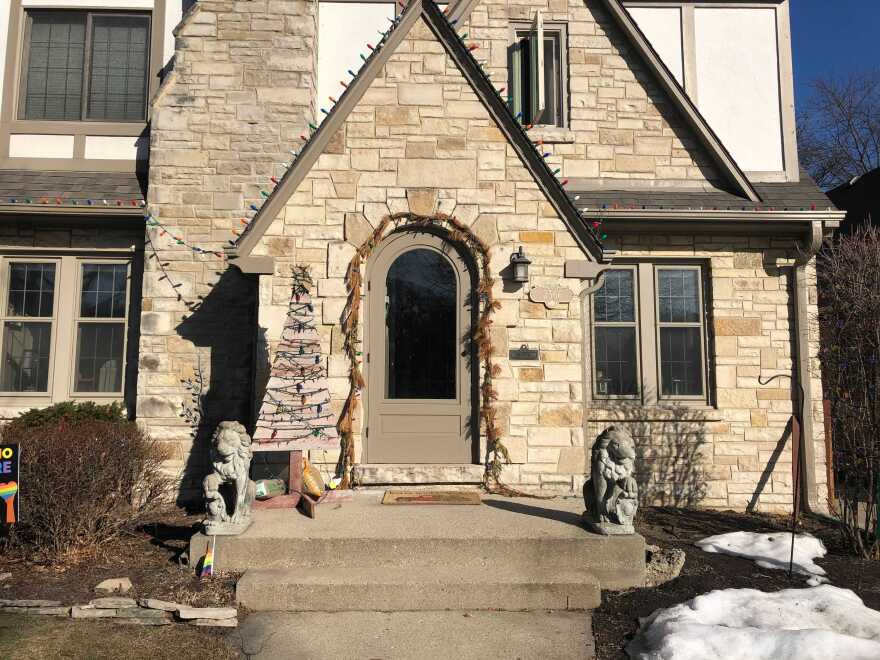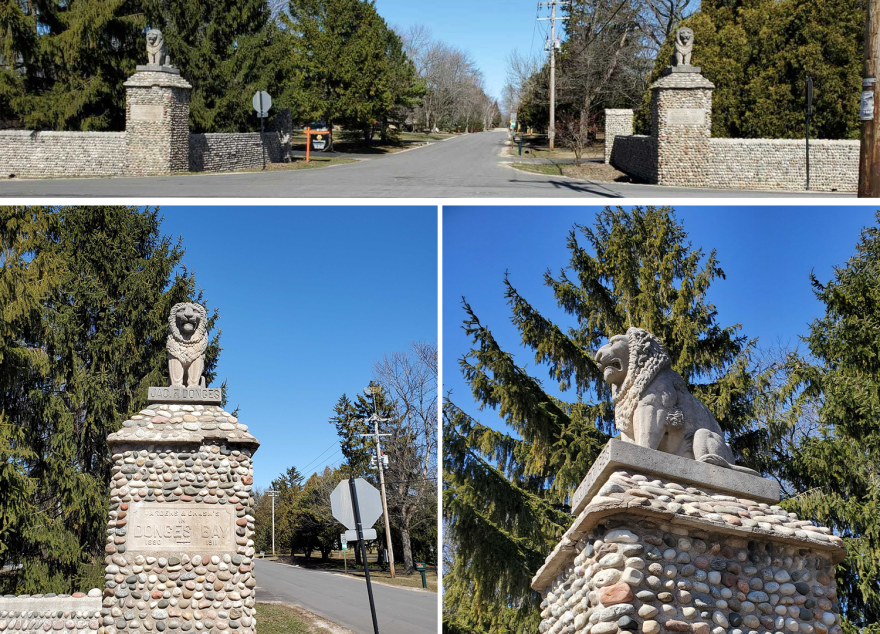In the The Wizard of Oz, Dorothy famously exlaimed: “Lions and Tigers and Bears!” Well, in Milwaukee, it might just be “Lions!”
Our Bubbler Talk question asker Hannah Tahtinen wondered:
"I want to know if I'm imagining it, but does Milwaukee have a thing for lion statues?"
You may have seen them — sitting majestically, with their long manes and clawed feet carved in stone or iron façade on houses, inside movie theaters and beside bridges.
Hannah helped come up with an exhausting, but not exhaustive list of Milwaukee-area lion statues. And we asked two UW-Milwaukee art history professors, Richard Leson and Sarah Schaefer, to paw-s and weigh in.
1. Edward Diederich Lion House

The lion houses around Milwaukee are characterized by two lions standing sentinel at a door. Professor Leson says they symbolize power and might — a symbol that goes back as far as ancient times.
“You see these, you know, these heraldic, these opposed lions at the so-called Lion Gate at the ancient Greek temple, or fortress, at Mycnae in southern Greece. And I think that that's something like 1250 BCE, 13th century. And why are they there? They're there because they are a sign of the power and the might of the keepers and the owners of that fortress,” he says.
2. Lion House on Milwaukee’s Near West Side
This lion house, also known as the George Koch lion house, is part of the beaux arts, or beautiful arts, style.

“So that architectural style that was very prevalent in particularly in cities like Milwaukee, like Chicago, like Cincinnati, Pittsburgh, Detroit that were industrial cities that were developed in the second half of the 19th century, in the first half of the 20th century,” Professor Schaefer says.
The popularity of beaux arts in Milwaukee helps explain why there are so many houses with two sentinel lions.
Schaefer says the style has links back to ancient Greek and Roman architecture, but also has a lot of decorative elements that make it a little bit more ornate than a lot of ancient Greek and Roman architecture. "So it's about beauty and the same kind of ideals of order and balance that you see in a lot of ancient architecture," she says, "but kind of modernized in some ways."
3. Wauwatosa Lions


LISTEN: Shh, No Roaring! When A Lion Lived In The Downtown Milwaukee Library Building

Schaefer says the Iron Block Building is the last cast iron facade in Milwaukee. There, two small lion heads are carved at the top of pillars 20-30 feet above ground.
She says these lions don't necessarily have the same imposing quality as the lion houses.
“It's not so aggressive or powerful, or it's not guarding as a sentinel, like you see in the lion houses," Schaefer says. "So it becomes a little bit more flexible in terms of meaning, in terms of its just visual quality, you know, it kind of just adds visual interest.”

The Germania Building was built in 1896 and originally housed Germania Publishing Company. The Milwaukee building was built in the neoclassical style, of which beaux arts is a subset.
Like the Iron Block Building, there are two lions are at the top of pillars — a few dozen feet above ground.
6. The Starr Group Lions in Greenfield

7. Eight Stone Lions In Lake Park

According to the Friends of Lake Park, the two Lion Bridges were constructed in 1896-97 and were sculpted out of sandstone and cast and carved by a stonecutter. In 1964, the bridges were narrowed and closed to cars.


Not all of the lions you see around town are from the beaux arts era. A pair of sculptures that adorn a well-known building near Milwaukee's City Hall arrived as recently as 2008.
“The lion sculptures in front of the Ziedler Municipal Building, which ... were actually gifts from the city of Ningbo in China. And those so those examples ... not only look Asian inspired, they were actually produced in China," says Schaefer.
9. Fairy Chasm Gate In Bayside

The Fairy Chasm Gate features lion statues on the 9400 block of N. Lake Drive in Bayside. At the turn of the century, Jake Donges and Fred Usinger developed the land north of the lion gates. The gate was known as “the entrance to the alps.” Picknickers would present a ticket at the gate and follow a two-mile-long winding path along the former Fish Creek Ravine, which was renamed Fairy Chasm.

UW-Milwaukee art history professor Richard Leson says Hannah is not imagining things.
“There are lions everywhere. I think, however, that that's not necessarily endemic to Milwaukee, and that there are lions all over the place throughout the United States, throughout, really Europe. And this is this is sort of a general sort of European cultural heritage, traditional sort of sign,” he says.
Lion imagery is also central to ancient Asian and Middle Eastern art forms. And as mentioned earlier, Leson says it symbolizes power and might.
But Schaefer has something different on her mind when she passes a lion house by her home. “In that house, the lions, both of them have one paw raised, which makes me think of my cat," she says.
Have a question you'd like WUWM to answer? Submit your query below.
_







